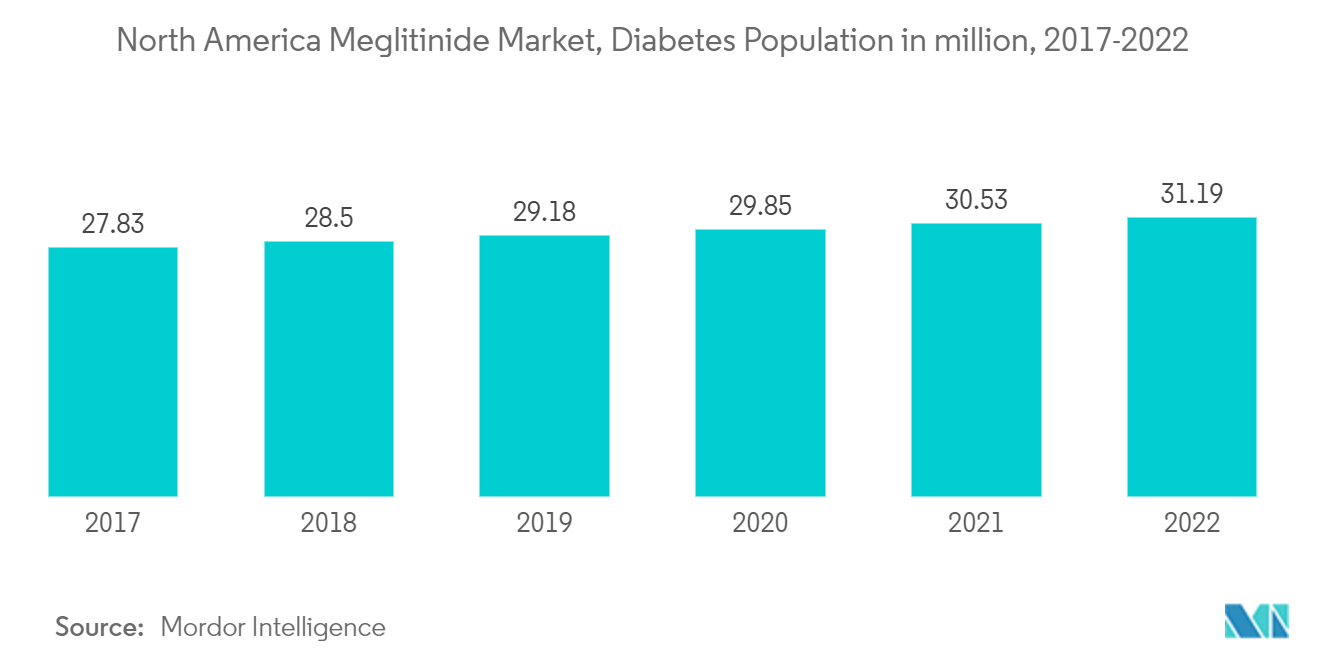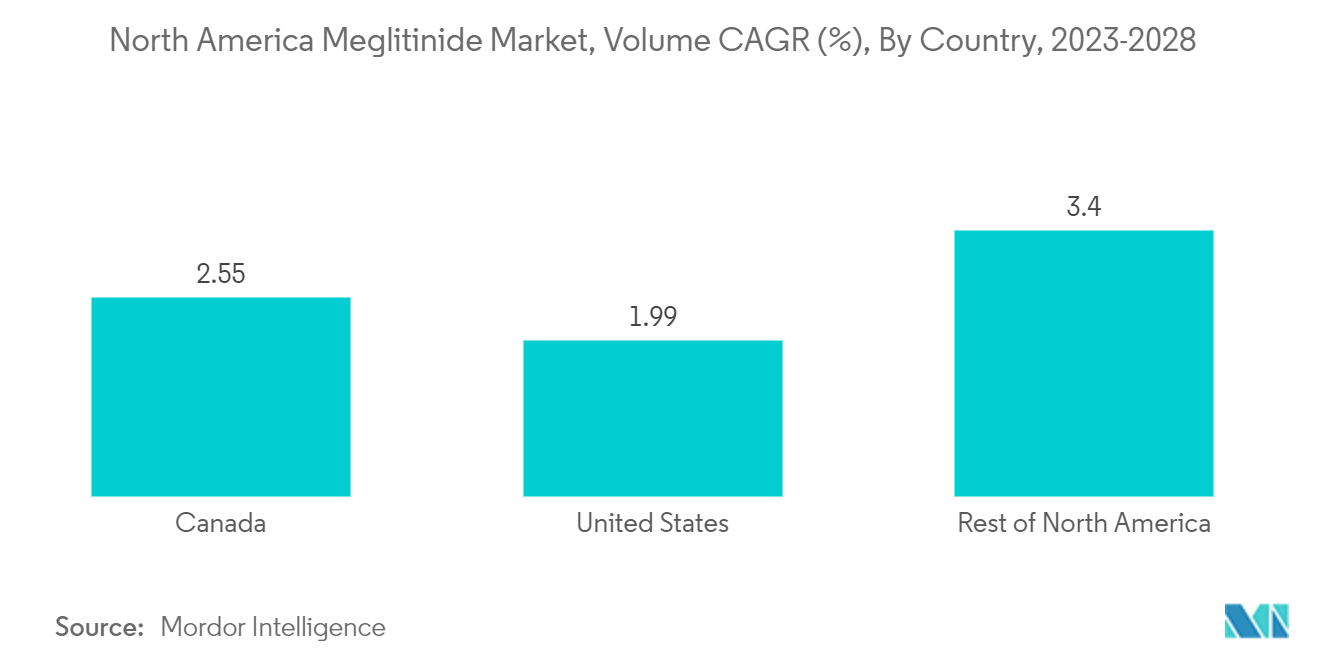Market Trends of North America Meglitinide Industry
Rising Diabetes Prevalence in North America Region
According to the National Diabetes Statistics Report, approximately 37.3 million people, or approximately 11.3% of the US population, have diabetes. People who are overweight are more likely to develop prediabetes, which can progress to type-2 diabetes, putting them at risk for complications, acute and long-term complications, and death. Obesity, an unhealthy diet, and a sedentary lifestyle are all contributing to an increase in newly diagnosed type-1 and type-2 diabetes cases. The increased prevalence of diabetic patients and global healthcare expenditure are indicators of a greater proclivity for diabetic drugs. Type-2 diabetes (T2D) is becoming more common and is linked to an increased risk of cardiovascular and renal disease. Meglitinides are oral medications used to treat type-2 diabetes in conjunction with lifestyle changes. They work by stimulating insulin release from pancreatic beta cells, which lowers blood glucose levels. Meglitinides do not work in people with type-1 diabetes because their action is dependent on the presence of functioning beta cells. In recent years, the prevalence of diabetes has increased alarmingly throughout the North American continent. The prevalence of diabetes is at an all-time high in industrialized nations like the United States and Canada, mostly because of alterations in lifestyle. Numerous health problems are brought on by diabetes. Diabetes patients must make many adjustments throughout the day to keep their blood glucose levels within normal ranges. These adjustments may include giving themselves extra insulin or eating more carbs.
The market under study is thus expected to increase during the course of the analysis period as a result of the aforementioned factors.

The United States is Expected to Dominate the North America Meglitinides Market.
According to the American Diabetes Association, 1.4 million Americans are thought to receive a diabetes diagnosis each year. In Canada and other North American nations, diabetes is one of the main killers. The disease's rising incidence, prevalence, and progressive nature have driven the development of novel medications to give diabetic patients more treatment options. Non-insulin medications, which serve as first-line therapy for people with type-2 diabetes, currently account for more than half of sales in the anti-diabetic market. Because they are seen as medically essential, most health insurance policies cover diabetes drugs. Medicare often covers medication for diabetes. A guide on Medicare and diabetes prescription drug benefits is available from the American Diabetes Association. Patients with insurance typically pay a copay for prescription drugs that can range from USD 10 to USD 50, depending on the medication. The patient's copays may reach USD 200 or more a month if they are for many medications.
Meglitinides, for example, bind to the sulfonylurea receptor in beta cells (pancreatic insulin-producing cells) but at a different part of the receptor than sulfonylureas do. This class of drugs, also known as non sulfonylurea secretagogues, is relatively new in comparison to the sulfonylureas (chlorpropamide [brand name Diabinese], glyburide [DiaBeta, Glynase, Micronase], glipizide [Glucotrol], glipizide extended-release [Glucotrol XL], and glimepiride [Amaryl]). Meglitinides work in a similar way to sulfonylureas, but with a few key differences. Meglitinides' interaction with the receptor is not as "tight '' as sulfonylureas', resulting in a much shorter duration of action and a higher blood glucose level required before the drugs produce insulin secretion from the pancreas. In the United States, two meglitinides are currently available: repaglinide (Prandin) and nateglinide (Starlix). Both are approved for use in people with type-2 diabetes, both alone and in combination with other oral diabetes medications. Meglitinides' main effect is to lower after-meal blood glucose levels, which results in a lower HbA1c (an indicator of blood glucose control over the previous 2-3 months).
Owing to the aforementioned factors, the market is expected to grow during the forecast period.


